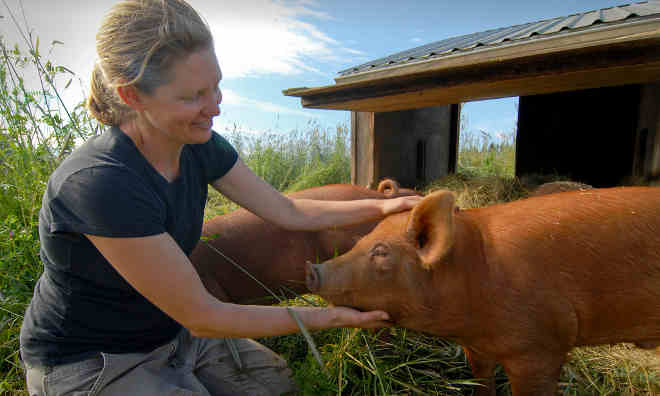Not all foods are created equal. Researchers at the University of Texas, Austin report that the amounts of nutrients in forty-three different food crops have significantly decreased since 1950, concluding that the most likely causes were changes in the plants themselves. Since 1950, farming has intensively focused on crop yields, with the U.S. Department of Agriculture (USDA) estimating a 170 percent increase in U.S. crop yields between 1948 and 2009. The Organic Center reports that today’s sweet corn, potatoes, and bread now have, on average, 16 percent less calcium, 15 percent less iron, and 38 percent less riboflavin than they did a generation ago.
But heritage breeds of farm animals and heirloom plant varieties have the potential to be more nutritious than conventional crops and are often better adapted to particular climates. For example, the rust color of Tamworth pigs (shown above) helps keep them safe from sunburn, making it easier to raise them in open pastures. The U.S. Mayo Clinic has found that grass-fed and pasture-raised meat often have higher levels of omega-3 fatty acids, linoleic acid, and antioxidant vitamins, such as vitamin E than conventional breeds of livestock.
Many indigenous vegetables are also highly nutritious and well suited to dry or otherwise harsh growing conditions. The Christensen Fund is working closely with farmers and communities in the American southwest to reignite a taste for indigenous foods and make them more available to consumers. Their U.S. programs cross the U.S.-Mexican border in one of the most biologically and agriculturally diverse regions of the world. In the Sierra Tarahumara region of northern Mexico, for example, Indigenous peoples still grow 16 of the 25 different varieties of Mexican maize.
Other organizations are also promoting indigenous breeds. Slow Food International is also works globally to promote and preserve nutritious, indigenous foods. American retailers, including Heritage Foods USA, sell heritage food products across the country.













